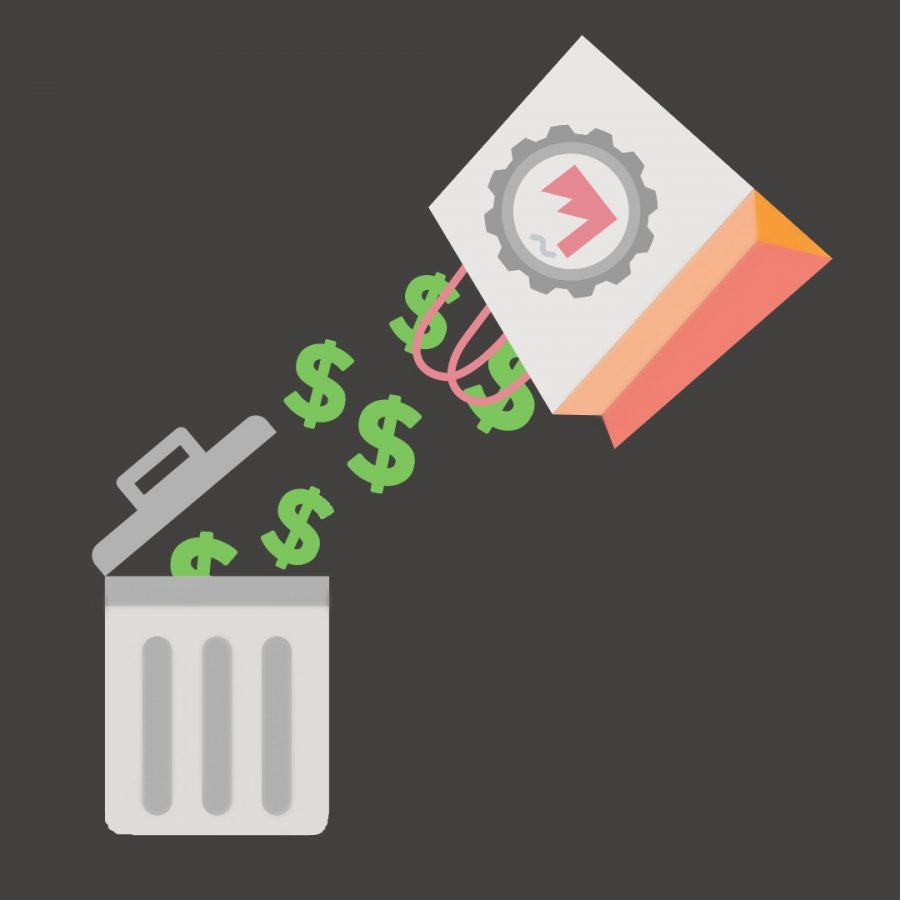Opinion | The fashion industry hates fat people and the lower class more than it loves money
September 17, 2021
Congress estimated in a 2017 report that the global fashion industry is worth a whopping $2.5 trillion, with Americans spending $380 billion to the market that year alone.
This unprecedented amount speaks to the prominence of fashion in people’s lives — because believe it or not, fashion intimately touches all of us. The figure also depicts capitalism’s chokehold on society and the grip it has on our wallets.
But money doesn’t seem to be the only thing driving the fashion industry. Inclusive sizing and affordable pricing would improve clothing brands’ reach and, most likely, their profits. Yet, for most brands, these seem secondary to deep-seated disdain for fat people and the poor.
One size does not fit all, and it never will. Genetics, diet, ethnicity and cultural norms all shape how our bodies look and grow. The assortment of people’s shapes and sizes should illustrate our sublime diversity, but instead often prompts critical speculation on who is worthy of having quality clothing that fits.
The fashion industry has cultivated an image of what this deserving man or woman should look like — non-binary and genderfluid folks aren’t even a consideration most of the time. Thin, muscular, long, shiny, tall — they’re all words that describe this vision, begging the question — who embodies this characterization?
The average American woman wears between a size 16 and 18, but the “ideal woman” is only meant to comfortably fit within the constraints of a size zero. The last time I was a size zero was in middle school. I used to squeeze myself into those jeans just to say I could fit — like it was an achievement for a 13-year-old.
The same goes for walking into an American Eagle or Brandy Melville store and praying the “One Size-Fits-All” label meant it would fit me. I’ve cried over the cookie cutter shapes not fitting my physique. It distorted how I viewed my body and made me feel uncomfortable in my own skin whenever my growing body gained weight — an anguish millions of women experience.
The same stores that sell these single-cut items are also the ones that don’t sell sizes large enough for average people to fit into. Even when they do sell the sizes, the clothes are ill-fitting and unflattering. This perpetuates the feeling that midsized and large bodies aren’t supposed to be fashionable.
If a company wants to capitalize off of its customers, would it not be wise for them to open up their goods to a larger group? If size inclusivity existed within the apparel industry, companies’ profits would dramatically increase — and in a capitalistic society, doesn’t that sound like a logical thing to do? Well, I guess when it comes down to economic growth or shaming, most companies seem to choose the latter.
Fashion’s issues only deepen when the people making and marketing our clothes speak directly on the matter. Within the last decade, the CEOs of Abercrombie and Fitch and Lululemon both made remarks implying that they don’t want fat people wearing their clothes. Bigotry is all around us, but when people with influence and power join in on bullying, it hits harder.
The good news is we are seeing more shapes and sizes gracing billboards, campaigns, magazine ads and even runways due to growing awareness about the importance of inclusivity. Body positivity and neutrality movements helped pave the way for this representation — none of which could have been done without women of color — impacting the lives of hundreds of millions of people across the world.
These positive changes have been slow to set in, but major strides are beginning to overpower the contempt. Don’t applaud so quickly. Despite this progress, the fashion industry isn’t rid of its dirty laundry.
Atop the rampant fatphobia in the fashion industry, classism has also infected it for centuries. Luxury and high-end names have long kept their items exorbitantly priced and far from the reach of the general public, and popular brands are following suit. Maintaining inaccessibility is a priority of the industry — but sometimes the measures committed to achieve it are astonishing.
Rather than marking down items that haven’t sold well and offering reduced prices, it is more important that brands maintain a public image that exemplifies the intended consumer. Some companies — such as Nike, H&M, Burberry and Urban Outfitters — will actually go as far as burning their unsold items rather than reducing the price. Capitalism loves money, but this instance exemplifies the worst of the fashion industry and how it is willing to sacrifice profits for clout-drenched oppression.
Okay, so we’ve looked at the issues, but what about some solutions?
Some argue that there is no ethical consumption under capitalism — and to some extent I believe that is true. But ultimately, there are brands simply trying their best to be kind to people and the earth. Quality recommendations are difficult to find, but I have relied on websites like The Good Trade and Ecocult to help me be a better consumer.
Learning to be a better consumer is a core element in fighting capitalism and the bigotry that engulfs it. All we can do in a broken system is try our best.
Grace DeLallo writes mainly about feminist and environmental issues and politics. Write to her at [email protected]









